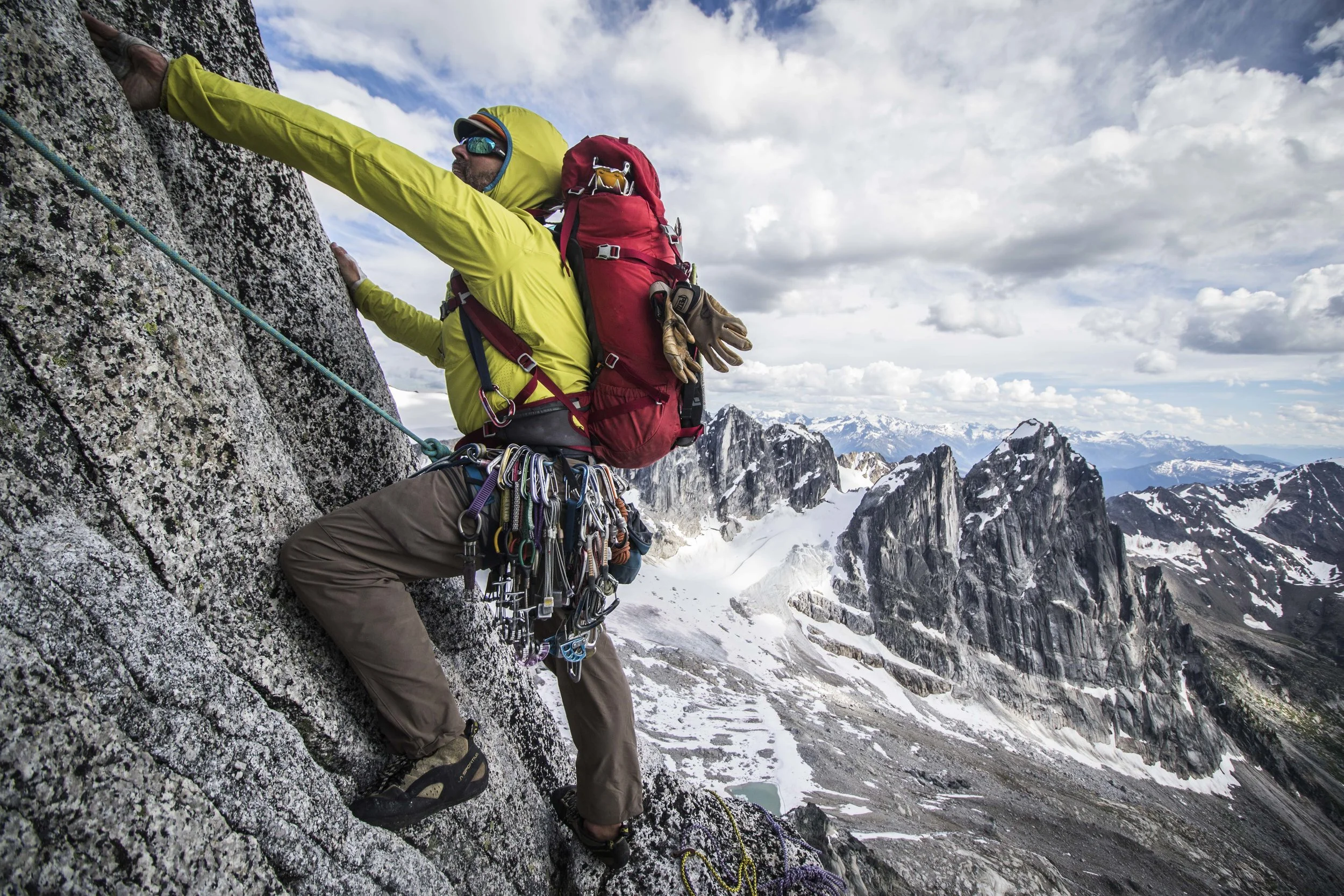By PAUL GAGNER
My headlamp beam shows the rocky trail heading down, down, down. I’m tired. The kind of tired where if I wasn’t disciplined I could just sit down and sleep in the middle of the trail. Instead I continue to barely shuffle one foot in front of the other. Down, down, down.
Sunny and I had started the day at a tea house at 10,900’ above Lukla in Nepal. We’re both carrying heavy packs: me, just under 60 pounds. Sunny, just over 70 pounds. We crossed a 15,150’ pass around midday that gave us access to the Hinku Valley, but the pass traverses the mountain side going up and down ridge after ridge. Sunny had gone ahead and told me she would meet me at a tea house at 12,200’, but I’m now at just under 12,000’. Where could she be? Where’s the tea house? Discipline.
Crossing 15,150ft Zatr La pass
Several days later we find ourselves slogging up a different hill. This time we’re above the last tea house and heading to where we’ll make our base camp. Sunny was here three years ago to try this route with a Sherpa friend, but they didn’t really have the gear for it and so they retreated.
This year Sunny and I co-led a group to Everest basecamp and then a climb of 20,305’ Island Peak. We’re feeling reasonably acclimated and rested and after dropping our clients off in Kathmandu we head back in to the Himalaya for round two.
I’m relying on Sunny’s recollections for where to go and where to place our camps. Basecamp turns out to be in a nice spot next to a lake at 15,500’. The next day we move up to camp 1, which requires scrambling up a loose 4th class gully to where we rope up for an easy 5th class pitch. A bit higher is camp 1 below a cliff and on a rocky platform at 17,200’. Speaking for myself, I’m pretty tired from carrying a heavy pack and from the altitude. Regardless, the weather is nice so I set up the tent while Sunny finds water.
Basecamp
A bit of climbing to get to Camp I
Moving to high camp the next day was interesting as we have to traverse under glacial cliffs, and around the side to access the top of the glacier. After roping up we weave our way over and around huge boulders, crevasses and ridges in the snow, finally finding a safe spot to set up camp between several large crevasses at just over 18,000’. We’re far enough out from the cliffs to be protected from all but the most catastrophic avalanches and rockfall.
Picking a route around the ice fall
Above us is the crux of the route. A 1,000’ ramp and couloir system that will take us to the ridge, which is where we will join the normal route. We’re both wiped out though from a week of hard effort so we decide to take a rest day.
The next day we finally get to rope up on some alpine terrain. The ramp is much dryer then when Sunny was here three years ago. It’s mostly rock where three years ago there was ice. In places there’s 4-5 inches of snice (a combination of snow and ice) covering the rock.
I’m relishing climbing up high in the alpine. The weather is nice. There are more cracks and places for gear than I anticipated. And we’re on a new route in the Himalaya. After a rope length I build an anchor with a good piton and nut and bring Sunny up.
I try going straight left and up a corner on the next pitch, but quickly determine that the corner lacks gear, and ice, so I come back towards the belay and climb straight up. The climbing is steeper then the first pitch and is mostly snice over rock, and not much gear. After 50 feet I get in a knifeblade before a steeper section of blocks and ice. Higher I spy a large flake near the top of the ramp. It looks like I can sling it to make an anchor, so I head up and left.
After building an anchor with another pin and a #6 Metolius Ultralight cam I look up. My heart sinks. 50 feet above me is a 40 foot vertical cliff with two narrow ribbons of ice. There’s a crack on the right, but above the crack looms a bunch of microwave size boulders, waiting to continue their downward dance with gravity.
Sun & snice near 19,000ft
Looking down at my rack, which now consists of no pins, 6 nuts, and 4 cams, I realize that my efforts to lighten our packs for the hike in was probably too aggressive. I’d taken a lot of pieces off as I went from the US to Kathmandu to Lukla to Tangnag. Now I was going to pay the price. Not only did we still have 4 or so pitches to climb to the ridge, we didn’t have enough gear to safely climb this obstacle, or others we might encounter higher in the gully. We wouldn’t even have enough gear for anchors to get down.
At that point it was obvious that the only direction for us was down, so I set the rap anchor up to rappel and with one last look up started down.
Climbing in general, but certainly in the greater ranges of the world, requires a lot of things to come together to be successful. Weather, health, route, right gear, partners - all have to align to reach the summit and get back down safely.
Am I bummed that we didn’t reach the summit of Kusum Kanguru? You bet. But was it a grand and memorable adventure with my wife? Absolutely. Will we be back? Hmm, never say never....
Headed home from high camp. Will we be back? Who knows…










